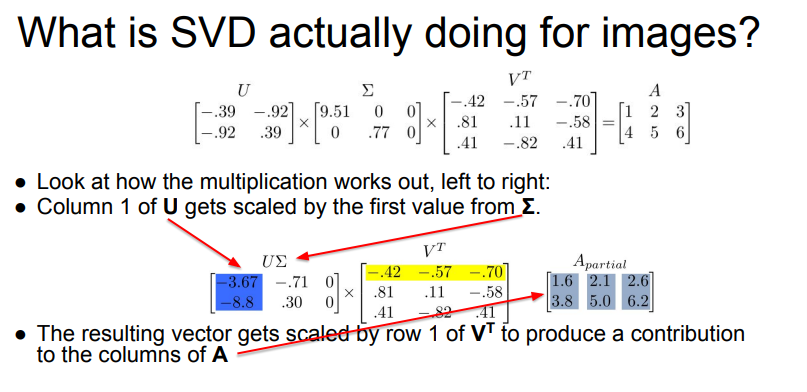- SVD image compression works by decomposing the image matrix into three matrices (U, Σ, and V).
- U and V are rotation matrices
- is a scaling matrix

-
each product of (col i of U) * (val i from sigma) * (row i of V^T) produces a component of final A
-
A is a linear combo of cols of U
- using all columns of U, we can rebuild og matrix perfectly
- but real-world, we get first few columns of U = principal components
- show major patterns
- rows of V show how principal components are mixed to produce cols in the matrix
-
It approximates the original image with a lower-rank matrix → image compression by taking first k principal components
- reduces the amount of data needed to represent the image while retaining its key features.
-
use to solve
principal component analysis (pca)
- columns of U are principal components (orthogonal directions of variance)
- sigma contains singular values (importance of each component)